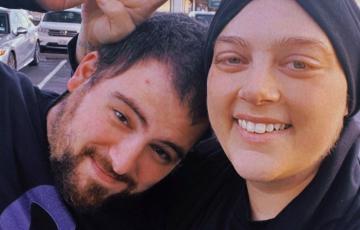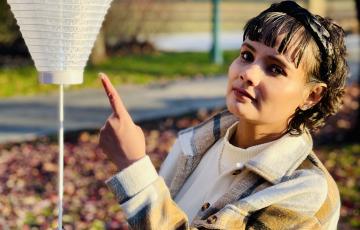Search Results
#TILTCANCER - Start Your Charity Stream Today
#TiltCancer is The Leukemia & Lymphoma Society’s gaming & esports program. Join us and our community of content creators by creating a Livestream fundraiser, sign up for our video game fundraising events or become a #TiltCancer ambassador.
Chemotherapy and Drug Therapy
Chemotherapy drugs kill fast-growing cells throughout the body, including both cancer cells and normal, healthy cells. The damage to normal, healthy cells can cause side effects. Chemotherapy is typically given in cycles. Each cycle is made up of a certain number of days of treatment, followed by a certain number of days of rest.
Diagnosis
An accurate diagnosis is one of the most important aspects of a person’s care. Obtaining a precise diagnosis will help the doctor
- Determine the MDS subtype
- Estimate how the disease will progress
- Determine the most appropriate treatment
Since MDS can be a difficult disease to diagnose, you may want to get a second medical opinion by an experienced hematopathologist before you begin treatment.
Chemotherapy and Drug Therapy
There are many different types of drugs used in the treatment of MDS.
Lower-Risk MDSImmunosuppressive Therapy. Drugs that suppress certain parts of the immune system can help some patients with lower-risk MDS. In some types of MDS, lymphocytes, a type of white blood cell, may attack the bone marrow, causing it to stop making enough healthy blood cells. Immunosuppressive therapy lowers the body’s immune response to allow bone marrow stem cells to grow and make new blood cells. The main immunosuppressive therapy drugs used to treat MDS are:
Methods to Administer Drugs
Chemotherapy and other drugs are often given in combination with each other and can be given in different ways. The method of administering the drug is based on the actual disease diagnosed and the agent's effectiveness. Common methods include:
Allogeneic Stem Cell Transplantation
Allogeneic stem cell transplantation involves the use of stem cells from someone other than the patient. The donated stem cells can come from either a person related or not related to the patient.
T-Cell Prolymphocytic Leukemia (T-PLL)
T-cell prolymphocytic leukemia (T-PLL) is an extremely rare and typically aggressive malignancy (cancer) that is characterized by the out of control growth of mature T-cells (T-lymphocytes). T-cells are a type of white blood cell that protects the body from infections. T-PLL affects older adults with a median age at diagnosis of 61 years, and it is more common in men than in women.
Treatment
It's important that your doctor is experienced in treating patients with chronic myeloid leukemia (CML) or has access to a CML specialist. Doctors who specialize in treating patients with CML are called “hematologist-oncologists.”
Types of CML TreatmentClick the links below to read about types of treatment for CML.
Tyrosine Kinase Inhibitor (TKI) Therapy
Tyrosine kinase inhibitors (TKIs) are a type of targeted therapy. TKIs come as pills, taken orally. A targeted therapy identifies and attacks specific types of cancer cells while causing less damage to normal cells. In CML, TKIs target the abnormal BCR::ABL1 protein that causes uncontrolled CML cell growth and block its function, causing the CML cells to die.
The first therapy given for a disease is called “initial” or “first-line” treatment. The following four TKI drugs are approved as first-line treatment for chronic phase CML:
LLS PedAL - A pillar of the Dare to Dream Project
Through LLS PedAL, The Leukemia & Lymphoma Society (LLS) is setting out to fundamentally change how children with pediatric acute leukemia, including acute myeloid leukemia and other high-risk leukemias, are treated.
Donate Cryptocurrency
Support The Leukemia & Lymphoma Society by making a charitable gift in Bitcoin or another cryptocurrency. We accept donations in Bitcoin, Ethereum, and over 40 leading cryptocurrencies. Crypto donations are one of the most tax-efficient ways to give to charity
Nora
Nora was diagnosed with acute lymphoblastic leukemia (ALL) on August 20, 2018. This is the day our lives were turned upside down and forever changed. Nora was about three weeks away from her second birthday, and we were in utter shock that she would now be fighting an unfathomable battle. After all, this was Nora, our go-hard, go-fast, ray of sunshine. Never did we imagine anything could get her down. But yet, here we were.

Cassie
In April 2023, I started to notice that I was having trouble breathing. I was a perfectly healthy 34-year-old woman who did kickboxing three times a week and was very physically active. I ended up going to a doctor who, for three months, misdiagnosed me with asthma and acid reflux. After about three visits to his office, I was crying to him, begging to be referred to a specialist. I really felt that there was something wrong with me that wasn't asthma.
Isabel
I never expected to have my whole adult life colored by cancer. In the fall of my freshman year of college, I was diagnosed with chronic myelogenous leukemia (CML). I was freshly 18 and didn’t have much of a vision for my future, but what vision I had definitely didn’t include chronic leukemia. It was a difficult and shocking time, trying to make new college friends while in and out of the hospital, navigating emotional terrain most of my fellow students were very far away from.Today I am 30, and a CML survivor of over 12 years.
Treatment
It's important that your doctor is experienced in treating patients with acute leukemia or has access to an acute lymphoblastic leukemia (ALL) specialist.
Types of ALL TreatmentDoctors use several types of approaches and treatment combinations for ALL:
Who We Are
The Leukemia & Lymphoma Society is at the forefront of the fight to cure cancer. We are the largest nonprofit dedicated to creating a world without blood cancers. Since 1949, we’ve invested nearly $1.3 billion in groundbreaking research, pioneering many of today’s most innovative approaches.
Cancer is a heck of an opponent.
It's a bully. But we aren't afraid of a fight. It's elusive. But our focus never fades. It's deadly. But we are known, cancer killers.

Jonathan
I’ll start from the beginning.
In 2012, I was diagnosed with testicular cancer. I had surgery to remove the mixed germ cell tumor and then was on the road to recovery. My lymph nodes were larger than they should have been, so I opted to err on the side of caution and had a lymph node dissection to have them removed. That was an invasive surgery that kept me out of work and from doing any physical activity for over six months. Once I healed up, I went back to work as a full-time police officer in Worcester, MA.

Tim
I knew multiple myeloma (MM) was a blood cancer. After all, my mom was diagnosed with myeloma at 62 years old in 2005. It’s extremely rare that I should also be diagnosed in 2021, but it happened. There’s no strong data that shows that it’s hereditary at this point. But more doctors are seeing family members being diagnosed. It's also becoming one of the most diagnosed cancers among African Americans.

Harjeet
In May 2018, I moved to Edmonton from India with my husband hoping for a new career, a new life, and to start a family. Things were all right at first. Everything was going smoothly; I was living my normal life, but life had different plans.
In May 2019, I began experiencing high fevers with no other symptoms. Weeks passed, and I found myself in the emergency room numerous times. I was told that it was just a normal viral fever and took Tylenol to relieve it.

Paul
Thank you on behalf of the Freeman Wilner Family for this Honored Hero Award in memory of my father, Dr. Freeman Wilner, he was a hero to many.

Addison
Florida is my happy place. It's where I've vacationed for over three decades. And when my husband and I had kids, it became our family's happy place too. Schedules are forbidden on vacation. We tell time by the sun as we sit on the beach with our feet in the sand, watching the tide roll in and out. While on vacation, we celebrate birthdays ― and they're done up big ― because that's the only way that we know how to celebrate birthdays ― BIG.

Laura
When you hear the words, “Your child has cancer,” your whole world stops, without permission, as you and your child are thrust onto the rollercoaster ride of pediatric cancer, desperate to get off with your sanity and your child’s life intact. Those months, or as was the case for us, years in treatment, are relentless, fraught with confusion and uncertainty as you desperately and constantly search for answers. For direction. For hope.
Disease Complications
Myeloma and treatment of myeloma can lead to mild to serious health complications and side effects. Some of these symptoms can be managed with ongoing supportive (palliative) care. Others may be medical emergencies requiring immediate attention. Always tell your healthcare team if you experience new or worsening symptoms.
PainPain related to myeloma or myeloma treatment can include
Pain Treatment
Pain can be managed effectively in a number of ways, depending on the cause and type of your pain. Treatments may include: